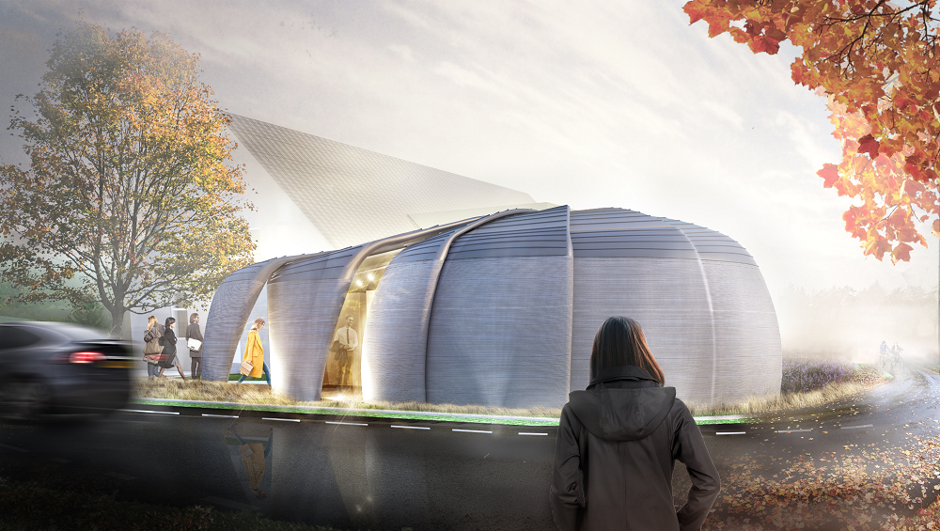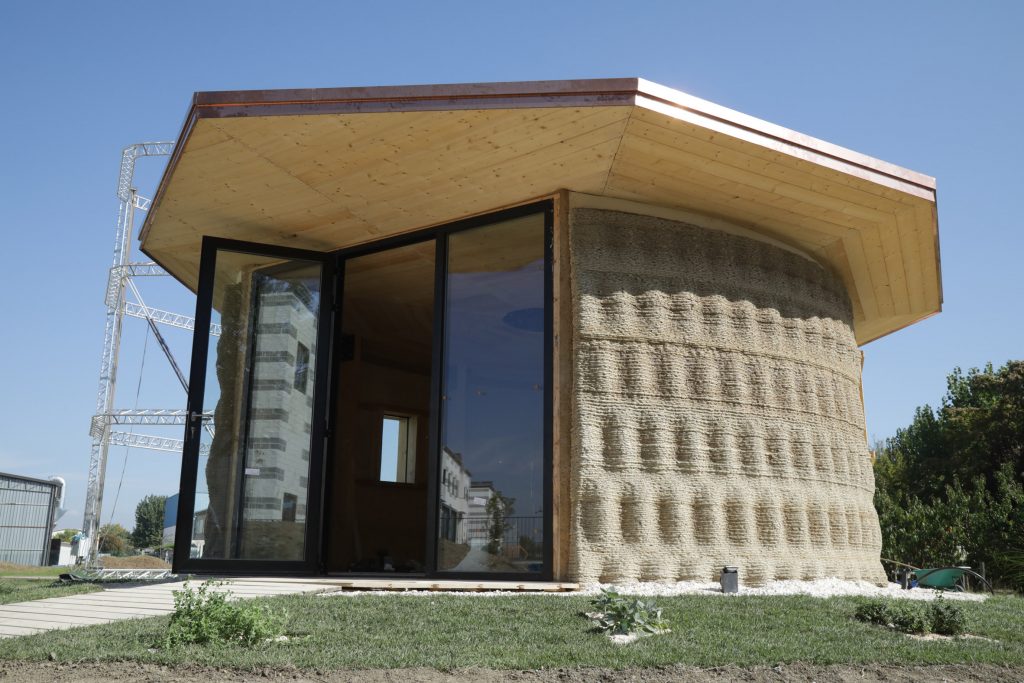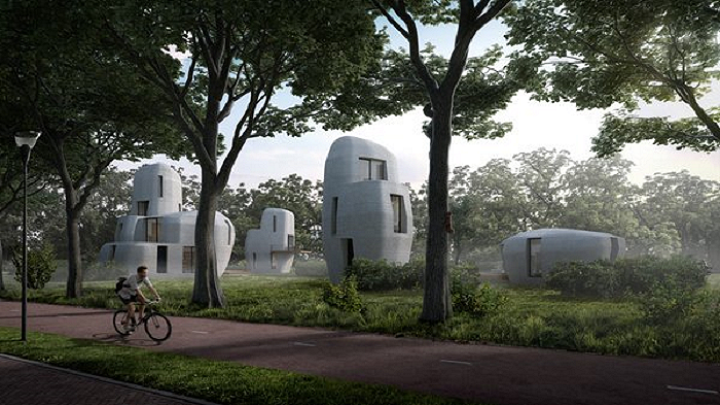Dutch company Twente Additive Manufacturing B.V. (Twente AM, or TAM) is working to change the home building industry for the better, by challenging traditional construction methods through the use of automation and additive manufacturing. The company hasn’t been around that long, but had a big goal for its inaugural year in business – to create a large-scale 3D printer using an ABB 9-axis robot that is placed on a gantry-like structure for a large build footprint.
 I’d say that Twente AM definitely succeeded in its mission. The structure supporting the conventional robot is able to move around enough so that it can build structures that are five meters high and ten meters long, which gives it a pretty impressive footprint of 391 m³….for comparison, a 6-axis robot can only complete a job with a 42 m³ footprint, but the rotational 9th axis that Twente AM added takes it the extra distance.
I’d say that Twente AM definitely succeeded in its mission. The structure supporting the conventional robot is able to move around enough so that it can build structures that are five meters high and ten meters long, which gives it a pretty impressive footprint of 391 m³….for comparison, a 6-axis robot can only complete a job with a 42 m³ footprint, but the rotational 9th axis that Twente AM added takes it the extra distance.
Ian Comishin, the President and Co-Founder of Twente Additive Manufacturing, explained in a press release that “The main role of this huge printer will be to create leave-in-place formwork for the construction of concrete homes to be built in British Columbia.”
The release goes on to explain that the extremely detailed prints its robotic AM system is capable of creating are made with a mortar material, which can rapidly cure within minutes to create artistic features and complex shapes that conventional methods of manufacturing just can’t complete. According to a video that the company released, parametric CAD/CAM software is directly connected to the large-scale printer, and makes these shapes through the use of algorithms.
The applications for Twente AM’s new 3D robotic 3D printing system include industrial architecture and building houses. That’s why the company took a pretty big risk in marketing its machine, only a few days after completing it, by live streaming its operation at the 40th Big5 international building and construction show in Dubai. Every day during the show, the team in Canada woke up at 2 am to get the machine started for the day. Check out the video to see the live 3D printing of Twente AM’s “record breaking concrete parts” below:
“Without hiding our failures, we gave them a taste of 3D concrete printing,” the video states.
And there were indeed some failures, though as awed exhibition attendees could probably tell you, most of the complicated parts they fabricated were completed successfully. The team in Canada showed off the system’s fancy footwork with intricate designs, had a little fun in making an Arabic beach cabana, and also created some necessary parts for its ongoing project, such as a formwork for the loading dock.
The Twente AM team is obviously thrilled with the results of what I’d call a pretty big gamble, which is making many in the industry think harder about what 3D printing is capable of in the architecture field. But the company also recognizes that they wouldn’t be where they are today without the help of many colleagues – collaboration is key to making these kinds of big advances.
“We couldn’t be where we are now without collaborating with other talented members of the industry…We didn’t make this ourselves, this technology is at the very early adoption stage and working with the other companies and academic institutions throughout the Netherlands, Denmark, Austria, The UK and Canada who are taking on the challenge of solving 3D printing for home building is what Twente’s foundation is built upon,” said Tim Brodesser, head of R&D.
I’m pretty impressed with Twente AM’s work, and even more impressed by the fact that they live streamed the 3D printing process at a crowded exhibition not long after completing the system. It reminds me of something I witnessed two years ago in Illinois, by invitation of the US Army’s Engineer Research and Development Center’s Construction Engineering Research Laboratory (CERL).
The team performed a live demonstration of its Automated Construction of Expeditionary Structures (ACES) technology by attempting to fabricate a 512 square foot barracks within 24 hours of continuous 3D printing; I say attempt because they did not succeed. But that’s what was so refreshing – we often hear a lot of hype about 3D printed construction, without much to back the claims up. So it’s really great to see teams that are brave enough to let others watch the process live, even if it may fail a time or two.
Discuss this story and other 3D printing topics at 3DPrintBoard.com or share your thoughts in the comments below.
(Images provided by Twente Additive Manufacturing)
The post Twente AM Live Streams Large-Scale 3D Printing of Concrete Formwork appeared first on 3DPrint.com | The Voice of 3D Printing / Additive Manufacturing.


















